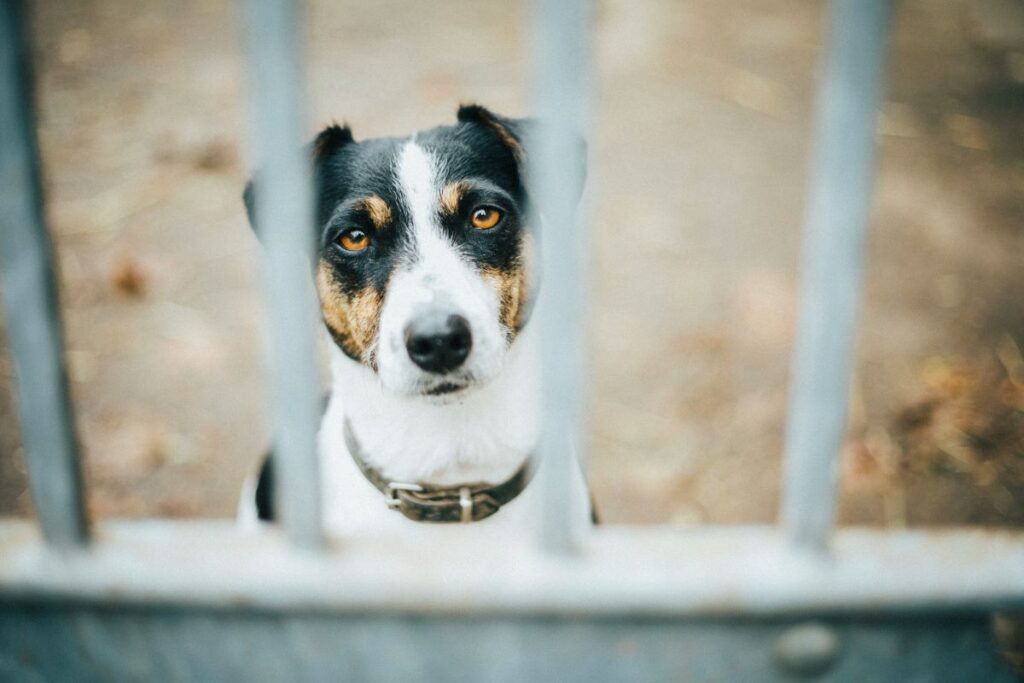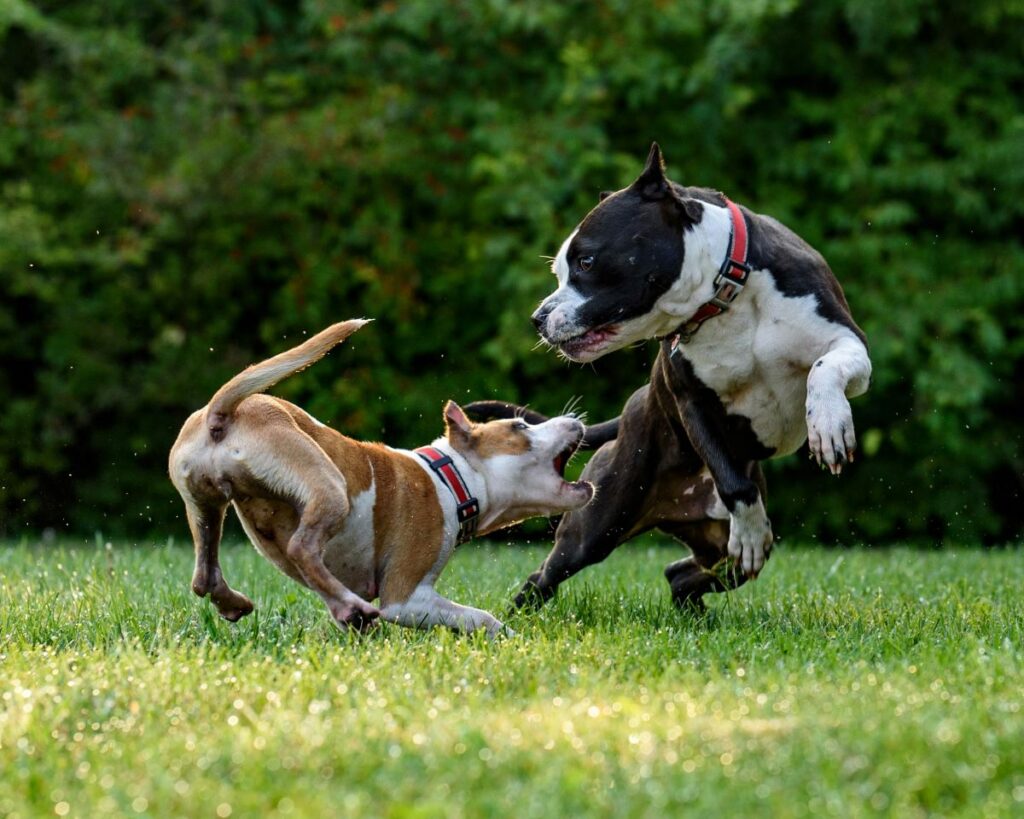Dog fighting is not just a grim, underground criminal activity seen in illegal fighting rings—it’s a growing concern for dog owners in everyday settings. Dog fights can erupt in public spaces like dog parks, in neighborhoods, or even within your own home, and they can be just as dangerous for pets and people alike. Understanding the dynamics of dog aggression and how to prevent these conflicts is essential for every dog owner.

Dog Fights in Dog Parks and Public Spaces
Dog parks can be a fantastic place for dogs to socialize, but they also come with risks. Dog fights are often unpredictable and can be triggered by a variety of factors. Here are a couple of tips on what to look for to keep your dog safe:
1. Recognize Signs of Potential Aggression
Before you let your dog off the leash, take a moment to observe the other dogs in the park. Look for early signs of aggression, such as growling, stiff body posture, raised hackles, or intense staring. If you notice these signs, it’s wise to leave the park or at least keep your dog on a leash until the situation settles down.
2. Avoid Overcrowded Parks
In a busy dog park, tensions can run high. Too many dogs in a small space often leads to overstimulation and can result in sudden bursts of aggression. If the park is crowded, consider visiting at a quieter time or choose a less busy park altogether.
3. Keep a Close Eye on Playful but Rough Dogs
While dogs are naturally playful, some may engage in overly rough play, which can escalate into a fight if one dog becomes overwhelmed. Pay attention to how your dog reacts—if they seem stressed or start retreating, it may be time to step in and redirect their attention.
4. Know When to Intervene
If a fight seems imminent, calmly step in to separate the dogs. Avoid yelling or physically grabbing them, as this can make the situation worse. Use a loud noise, such as a whistle or air horn, or find a physical barrier like a fence to safely separate the dogs.
Dog Fights in Family Homes
While dog fighting rings make headlines, fights between dogs in the same household can be just as concerning. Understanding the root causes of in-home dog aggression is key to resolving these issues.
1. Identify the Trigger
Intra-family dog fights often happen over food, toys, territory, or even attention. Pay attention to what causes the tension—does one dog get aggressive when another approaches its food bowl? Does one dog act possessive over your attention? Identifying triggers can help prevent future altercations.
2. Don’t Use Physical Punishment
If a fight breaks out at home, never respond with physical punishment. Hitting or scolding the dogs can escalate the aggression and damage the bond you have with them. Instead, use calm, assertive energy to break up the fight and address the behavior.
3. Separate and Cool Down
During a fight, calmly and safely separate the dogs. Avoid getting physically involved unless it’s absolutely necessary. Afterward, give them time to calm down in separate spaces. Trying to reintroduce them too quickly could reignite the conflict.
4. Seek Professional Help
If fights continue to be a problem at home, consult a professional dog trainer or behaviorist. They can help assess the situation and offer advice on managing the conflict, whether it’s through behavior modification or changes in how you manage their environment.
5. Consider Spaying or Neutering
Hormones can play a significant role in dog aggression. If your dogs aren’t spayed or neutered, doing so can help reduce territorial or mating-related aggression.
Understanding Dog Fights in Public and Within the Family
Whether in a dog park or at home, the risk of dog fights is something every dog owner must consider. In public spaces, it’s crucial to be vigilant and proactive in spotting early signs of aggression, especially if your dog is interacting with others. In the home, managing dogs’ relationships and addressing tension before it boils over into a fight is key.
How to Keep Your Dog Safe in Public:
- Know your dog: Understanding your dog’s body language and socialization levels can help prevent situations from escalating.
- Stay observant: Look for warning signs of aggression from other dogs.
- Control your dog’s interactions: Always stay in control and intervene early if things get tense.
How to Prevent Dog Fights in Your Home:
- Manage resources: If your dogs fight over food or toys, consider feeding them in separate rooms or using puzzle feeders to keep them occupied.
- Increase exercise and mental stimulation: Boredom and excess energy can contribute to aggression. Regular walks, playtime, and mental enrichment can help reduce tension between dogs.
- Create separate spaces: Give each dog a safe space to retreat to when they feel overwhelmed or need time alone.

Dog fighting isn’t something that happens solely in illegal rings—many happen in public parks, neighborhoods, or even within homes. By understanding the warning signs and triggers of aggression, dog owners can create safer environments for their pets. Whether at a dog park or in your own living room, maintaining control, preventing conflicts early, and seeking help when necessary are the best ways to ensure that all dogs remain safe and happy.
Remember, being proactive and informed about dog behavior is a responsibility that all pet owners should take seriously. If you ever find yourself unsure of how to handle a fight or aggression, don’t hesitate to reach out to a local animal shelter or a professional dog trainer for guidance. Protecting our pets and ensuring their well-being is the heart of responsible pet ownership.

